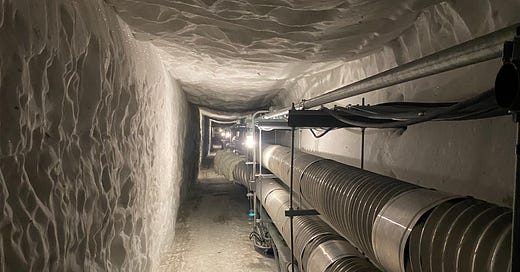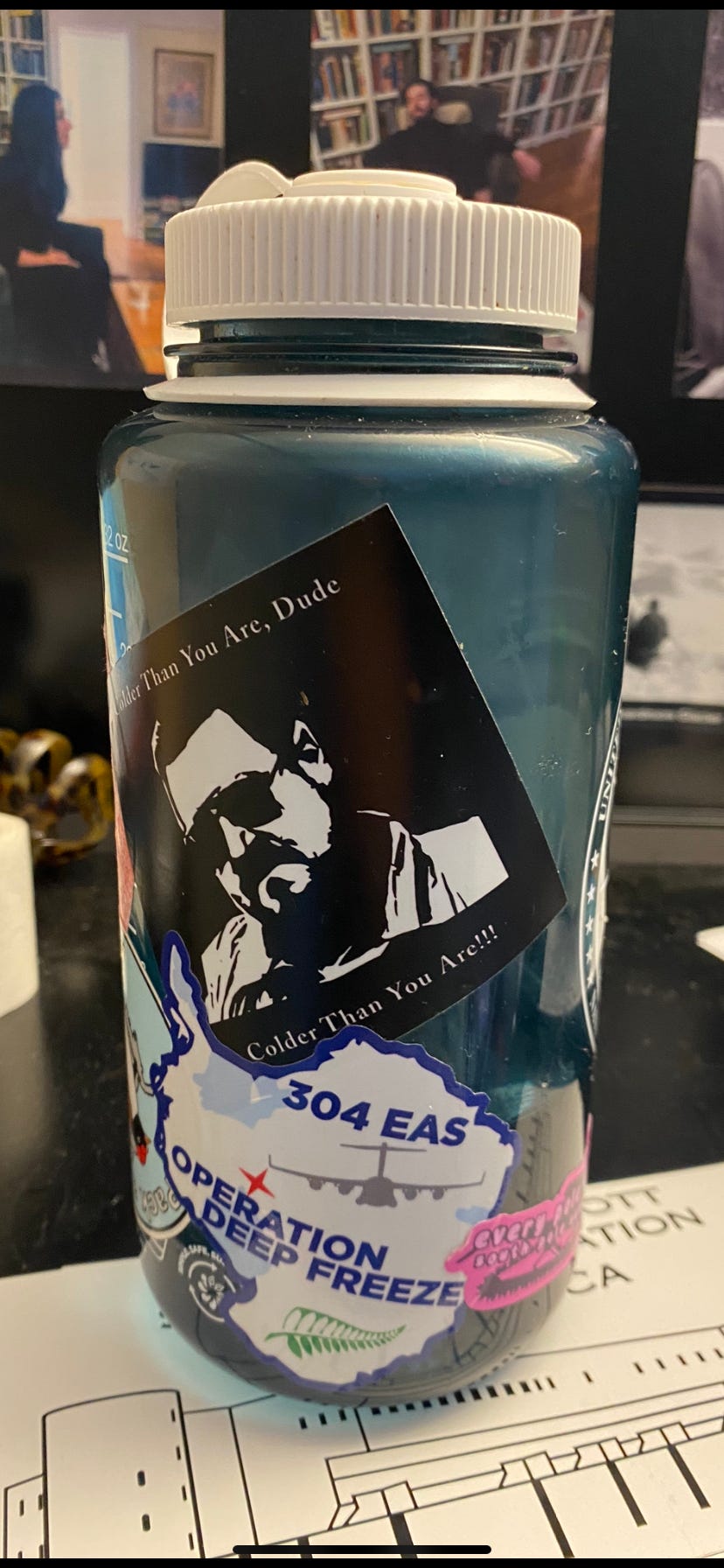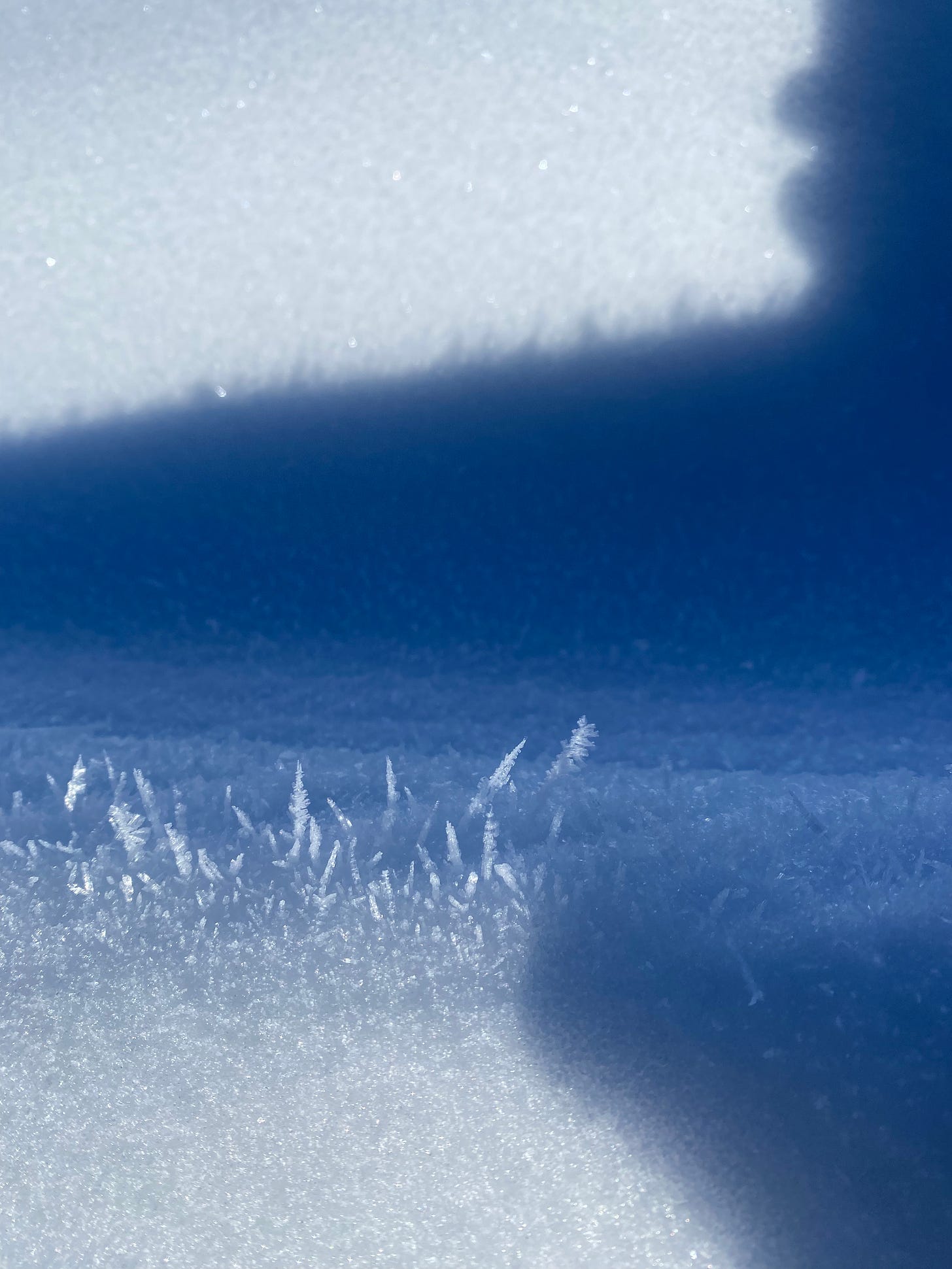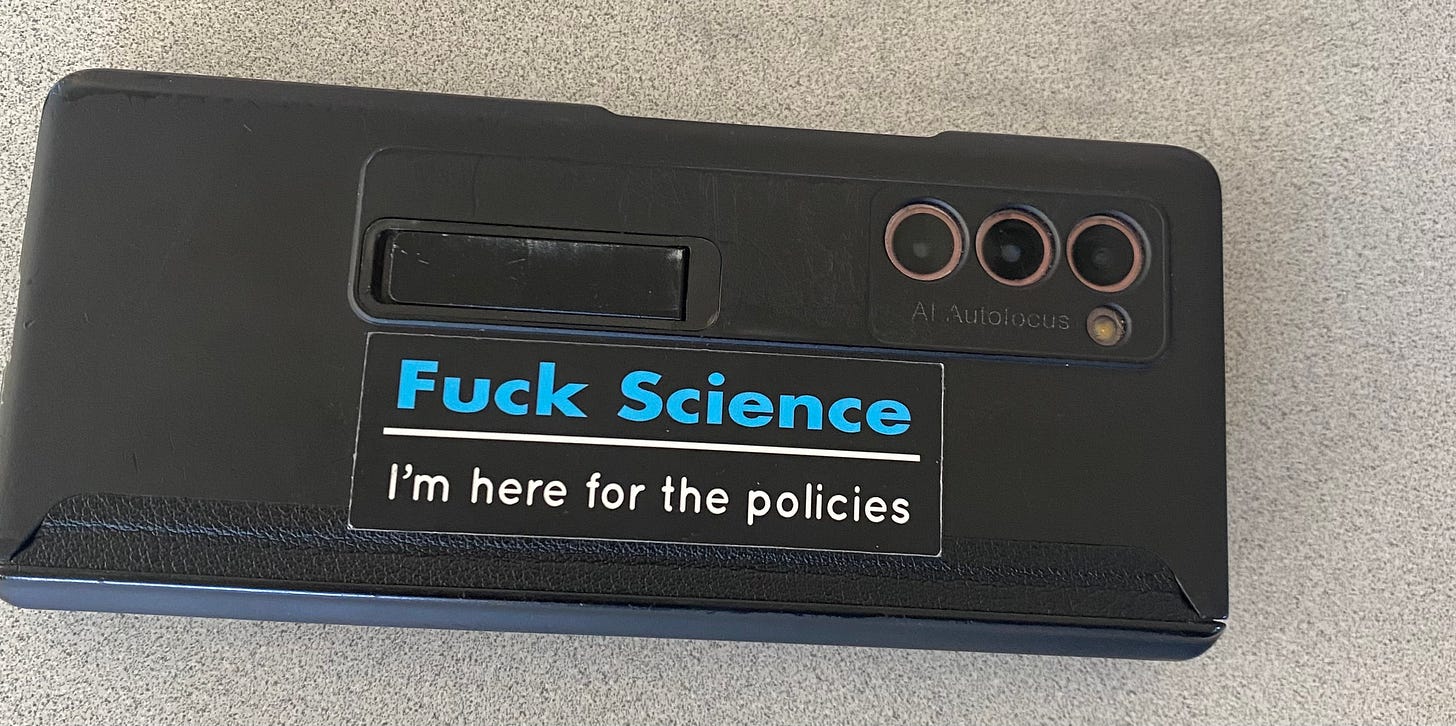Sometimes you just wish you could un-know something. That’s how I feel about finding out what happens to liquid waste—sewage, disposal food, gray water—at the Amundson-Scott South Pole Station.
A little background before the reveal: when you go hiking in Antarctica you are told to bring a pee bottle and some means of cleaning up and carrying out feces, if necessary. If an engine leaks oil or anti-freeze on the ice, someone from Waste is alerted and their clean-up crew handles the pollution. Knowing these facts, I assumed that the human waste produced on station—garbage, sewage, recycling—was removed at great expense either on a C-130 or via SPOT (South Pole Overland Transport).
I was right about the garbage and recycling—it’s baled, removed from the Pole either on SPOT or by plane, loaded on a vessel and transported via shipping container to California where all but the recycling is disappeared (to a hole in the desert?) —at great expense. Not so the sewage and extensive food waste that is dumped down the disposals in the kitchen and dish pit, not so the soapy water from sinks and showers, not so the endless toilet waste of 130 or so people. Where does this liquid mess go? Wait for it…into a giant hole in the ice. No. Really. It does.
Here’s how it works, sickening as the facts may be. Water on station is generated by drilling a 250 deep hole in the ice and then pumping great quantities of hot water into said hole. This creates a bulb shaped cavern beneath the surface as the hot water naturally melts the minus 60-something degree ice, creating a larger and larger hole and more and more water. The melted ice water created by the hot water is pumped out of the hole, down the tunnel, and into the building. The hole is our well. Actually, the thing is called a Rodwell, named for Raul Rodriguez who invented it in the 1960s when faced with a lack of water and plenty of glacial ice in Greenland.
After seven or so years, depending on the station’s population and water use, the Rodwell outgrows itself—all that hot water swishing around, melting the ice creates a massive hole. At 500 feet deep it becomes expensive and difficult to pump the water out. When this happens, as it has twice, the crew creates a new Rodwell and the giant hole, the hole that was the source for the most delicious drinking water I’ve tasted since childhood, is converted into a sewage tank. No, really.
There are two such cesspools at the Pole, each one filled with gallons and gallons of shit, food scraps and so-called gray water. Oh god. There has to be a better way and if there isn’t then we should have ten scientists here and a tiny handful of support staff. For starters, they can do their own baking. Or simply eat Ramen, as I do.
How can this level of pollution be allowed on a continent where you’re not supposed to remove so much as a rock? Not allowed to turn the snow yellow with a single, much-needed pee? Well, I’m told that per the Antarctic Treaty this waste is “contained” in the ice which, per the Treaty, makes it okay (?!). You may not, then, dump so much as a single turd on the surface of the ice but you can bury it—and thousands of gallons more like it—beneath the ice? In five or ten-thousand years, when the glacier either meets the sea (moving about an inch per day in that general direction) or just plain melts, this mass of frozen toxic waste will end up in the ocean. Do you see why I wish I had never known this? I bet you wish I’d never told you about it.
One of the qualities that keeps me in a state of perpetual awe here in Antarctica—despite the long hours and lousy pay—is how pure the place is. I live in New York City which seems a lot like Antarctica’s opposite. The one teems with bodies, buildings, colors, odors, humidity, animals, and sounds while the Antarctic is quiet, clean, uniform, scent-free, (mostly) structure free, sparsely populated and snowy white. More than anything, the Antarctic’s whiteness has long served as a pristine palate onto which the human imagination projected its wishes, fears and desires. In its idealized state, the present and historical greatness of the continent, its imaginative power as capital “N” Nature, contains so much precisely because of its unsullied absence. The void offers possibilities. How to fill the white expanse, the nothingness?
How do I feel knowing what I now know about the filth that the United States Antarctic Program (USAP) injects into the pure, ancient ice. How does the knowledge of this place as only artificially pristine alter my feelings for it as an ideal landscape? I’m not yet sure, but it isn’t good.
Some say the water we drink has been frozen since 500 A.D.—it was rain or surface ice crystals at the opening of the Medieval Period when the Roman Empire had hold of the greater part of Western Europe. By this measure we’re polluting the future, the present and the past. Worse, I’m part of the problem. You know the famous ice tunnels? That’s how the sewer leaves the station and how the freshwater arrives. The tunnel is purely for access.
When you arrive at the South Pole you’re told you’re allowed two 2-minute showers per week—unless you work in the galley or another “dirty” job like mechanic or fuelie. As a cook I get a shower every day but it’s supposed to be under a minute because, we’re told, water is expensive. Expensive? This is why I should shorten my shower in a program where wasting resources and money seems to be a central goal? Tell me to take a short shower for environmental reasons—I’ll be far more apt to time myself to the second. As it turns out, the reasons are in no small part environmental!
I learned about where the sewer goes and where the trash goes and where the water I drink and bathe in comes from by talking to people whose job it is to work on these systems. It took a while—but then why would USAP advertise such an embarrassing failure of environmental stewardship, no matter how “okay” their practices might be by Treaty standards? A massive hole of shit in the glacier—or three—may be a solution but surely it is the laziest, cheapest, most ethically corrupt solution I can think of short of just running a hose out onto the ice and letting it all freeze right there in plain sight—a conical brown stain you could spot from space. This might be preferable—at least the mess wouldn’t be hidden from sight and (far) out of mind. (Love Canal at the Bottom of the World…wasn’t that the original title of Bill Murray’s character’s screenplay in Tootsie?)
So that’s my bummer of a post. But before I jet off to change into my adorable galley uniform, I want to add that I am not as cranky as this post might suggest. I’m in a great mood these days because two weeks from today I’m scheduled to fly out of this compromised, ever-magical place. If the National Guard’s ailing planes fly as they ought to which they probably won’t because they haven’t done so all season—I’ll land in McMurdo on the 7th. I hope to see a penguin, prosaic as that may sound. (I’ve only ever seen the adorable and stinky little ones at the Central Park Zoo.) After two nights there I’ll fly to Christchurch, NZ before flying home to my beloved people and my messy city and my adorable dog and all the long, hot showers I want. (Not to mention to an apartment with a toilet that flushes into a sewage treatment plant, however imperfect!)














What an interesting post. I was thinking of you the other day when I heard a radio interview about travel. It asked, where would you go on holiday if money was no object? I thought about it and came up with the Antarctic. Despite the frozen shit, I’m sure it’s been an amazing experience. I’d love to get that sense of being in a completely different environment. Thanks for writing about your time there.
I have been watching the 4th season of TV show True Detective - the Night Country featuring Jodie Foster. The story takes place in an arctic climate research center located in a fictive Alaskan town (but they filmed it in Iceland). I have been thinking of your wonderful posts when watching it.